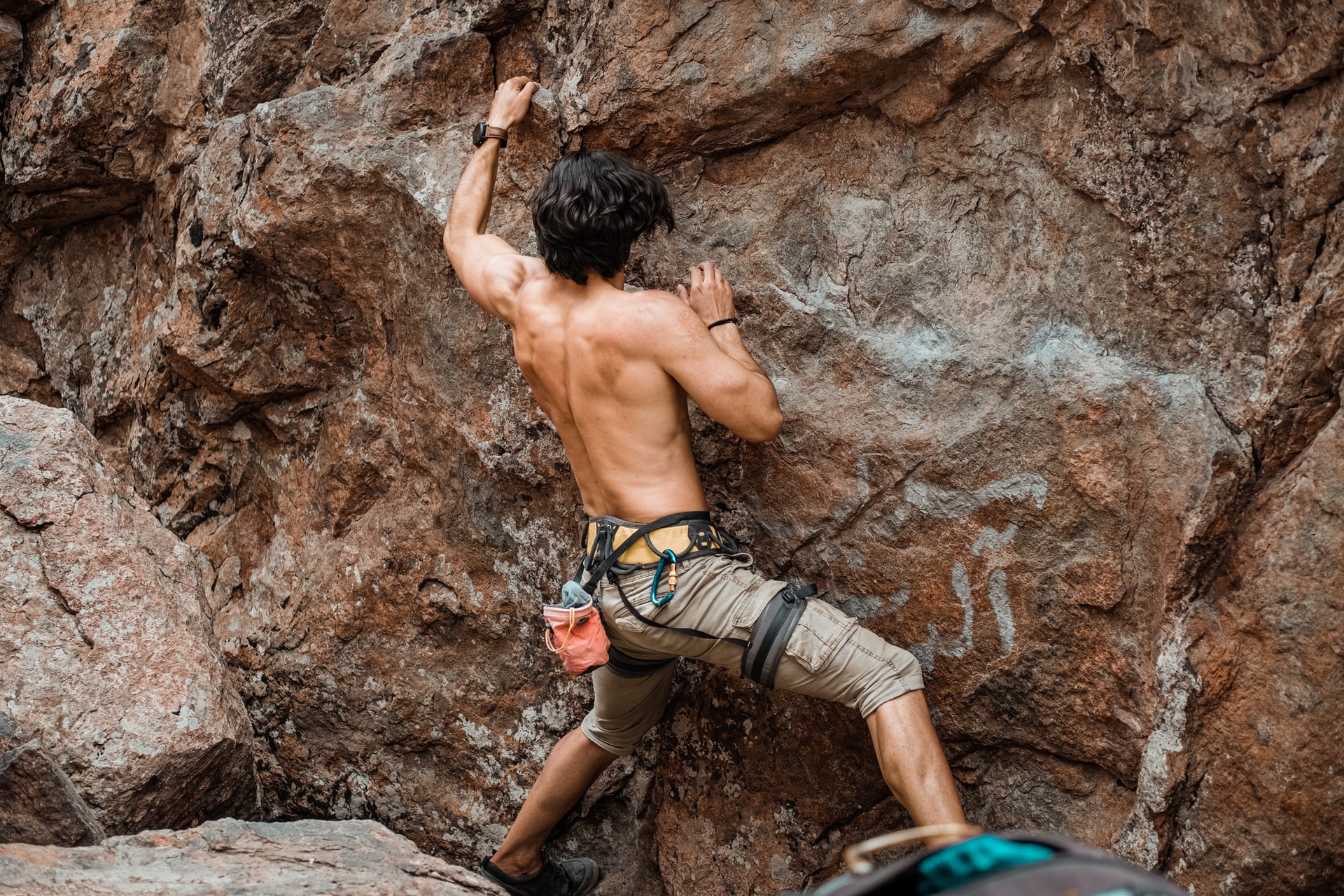Interested in adding something more dynamic to your fitness routine? Mountain climbing is just the way to do it!
If you’re keen to get climbing, a good place to start is at an indoor climbing gym. ‘Climbing an indoor climbing wall involves ascending a route with man-made holds fitted into the wall,’ says Candice Bagley, special projects coordinator at City Rock. ‘This environment is a safe, exciting and social space to get strong in a challenging way. Climbing outdoors, on the other hand, involves climbing on rock. This is a wonderful way to get in touch with the natural elements and visit beautiful places, including anything from a short, powerful gymnastic route close to the ground, through to scaling large cliff faces in mountainous regions involving lots of physical fitness.’
Bouldering
All about puzzling your way to the top of boulders, this climbing usually happens quite close to the ground (1–4 m) and doesn’t require ropes. ‘Indoors, there is usually a dedicated bouldering section where you can test your physical skills and problem-solving abilities above foam crash pads,’ says Candice. This is the most gymnastic of all the climbing disciplines and is a serious way to build your strength, especially for your core and upper body.

Top-rope climbing
An anchor (a fixed piece of protection) is set up at the top of the climb so that the climber is always protected from above. ‘Most beginners start out top-rope climbing, but many experienced climbers also choose this as a good way to engage the body without the risk involved with lead climbing,’ Candice tells us. It involves more aerobic fitness and the routes are longer. This kind of climbing will bring your heart rate up slightly, but not quite as high as during a light jog.

Lead climbing
With this activity, you clip yourself into your protection as you climb up the wall or rock face. If you are a beginner, practise top-rope climbing before moving on to lead climbing. ‘This is a great way to tie your mental fortitude with physical strength. It teaches you to remain calm under pressure and assess risks quickly,’ Candice says.

Indoor climbing
Using a number of colourful grips for their hands and feet, climbers make their way up an artificially constructed wall. This is perfect for newbies, as it is probably the safest form of climbing. The anchor points and holds are firmly fixed, giving you time to learn the moves. And because you are indoors, the weather will never be a factor.

Words: Roxy Greeff | Images: Unsplash







